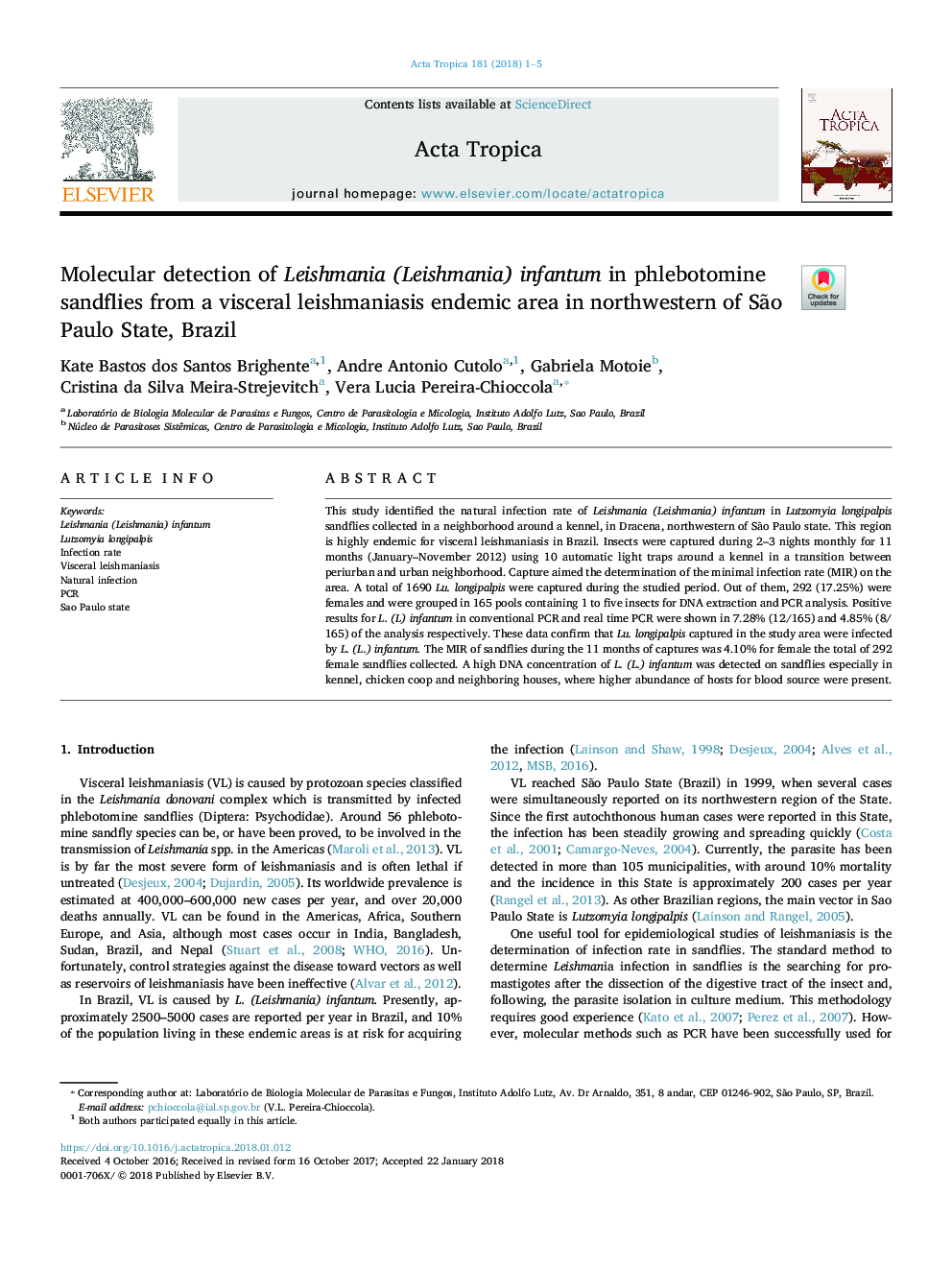| Article ID | Journal | Published Year | Pages | File Type |
|---|---|---|---|---|
| 8744353 | Acta Tropica | 2018 | 5 Pages |
Abstract
This study identified the natural infection rate of Leishmania (Leishmania) infantum in Lutzomyia longipalpis sandflies collected in a neighborhood around a kennel, in Dracena, northwestern of São Paulo state. This region is highly endemic for visceral leishmaniasis in Brazil. Insects were captured during 2-3 nights monthly for 11 months (January-November 2012) using 10 automatic light traps around a kennel in a transition between periurban and urban neighborhood. Capture aimed the determination of the minimal infection rate (MIR) on the area. A total of 1690 Lu. longipalpis were captured during the studied period. Out of them, 292 (17.25%) were females and were grouped in 165 pools containing 1 to five insects for DNA extraction and PCR analysis. Positive results for L. (L) infantum in conventional PCR and real time PCR were shown in 7.28% (12/165) and 4.85% (8/165) of the analysis respectively. These data confirm that Lu. longipalpis captured in the study area were infected by L. (L.) infantum. The MIR of sandflies during the 11 months of captures was 4.10% for female the total of 292 female sandflies collected. A high DNA concentration of L. (L.) infantum was detected on sandflies especially in kennel, chicken coop and neighboring houses, where higher abundance of hosts for blood source were present.
Keywords
Related Topics
Life Sciences
Immunology and Microbiology
Parasitology
Authors
Kate Bastos dos Santos Brighente, Andre Antonio Cutolo, Gabriela Motoie, Cristina da Silva Meira-Strejevitch, Vera Lucia Pereira-Chioccola,
